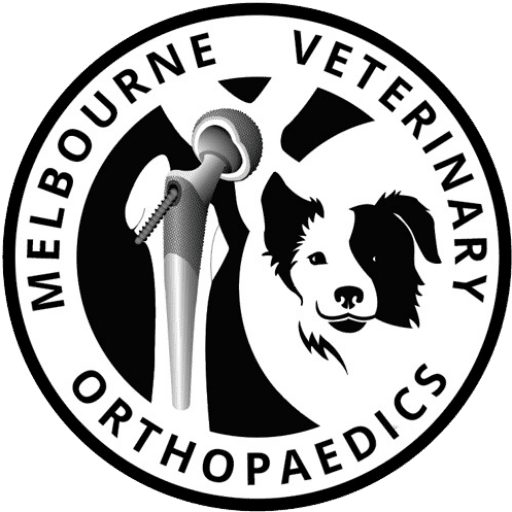Complications
Adult Rottweiler that came to see Dr Chris unable to walk on his leg 6 months after surgery
Veterinary orthopedic surgery can be complex and may involve various complications, which can impact patient outcomes and recovery. Here are some common complications associated with orthopedic surgeries in animals:
Infection: Surgical site infections can occur, leading to delayed healing and potentially more severe systemic issues.
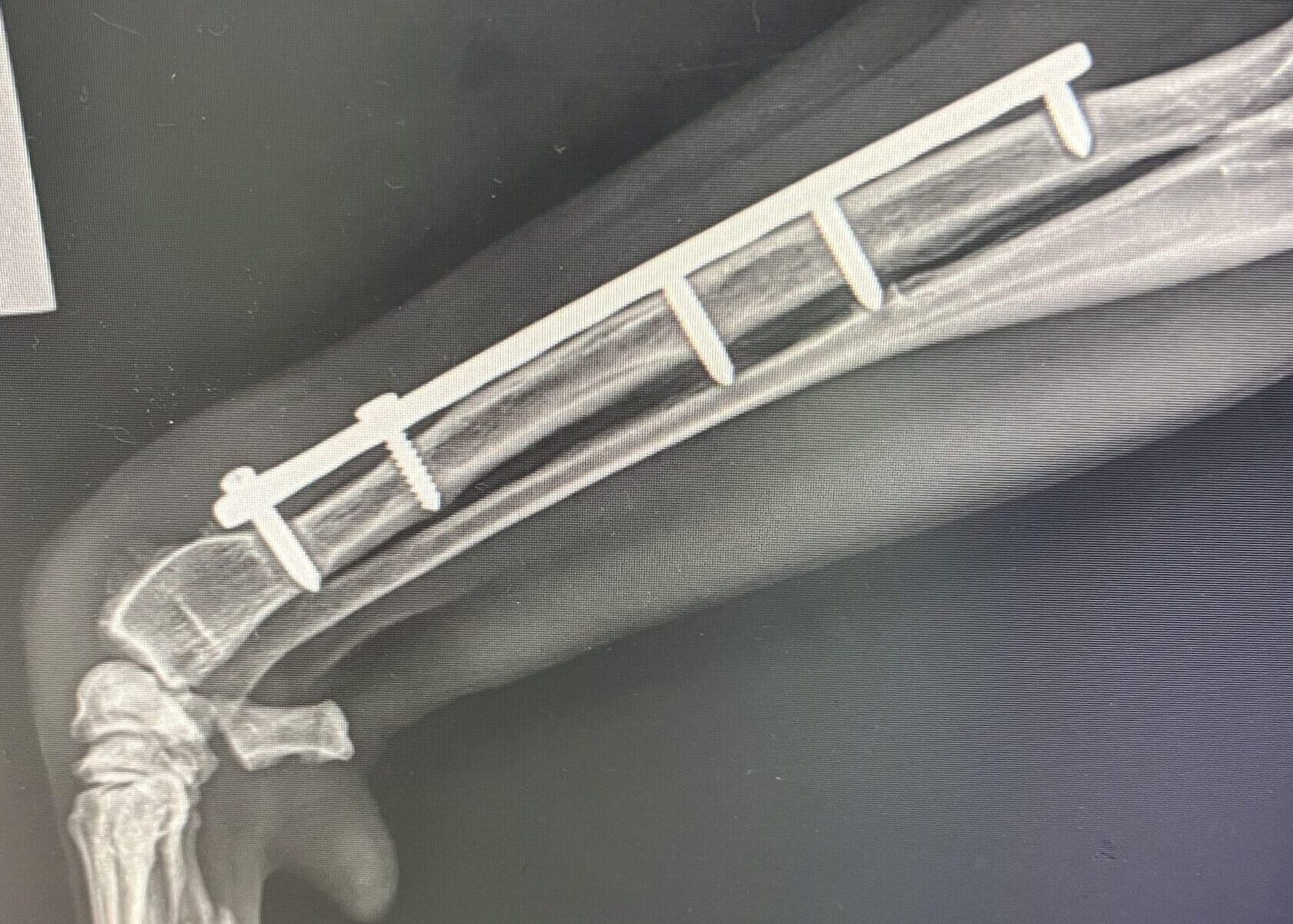
Years after surgery this Boxer has swelling, discharge and pain over the plate. We can see loose screws due to deep infection which cannot be cleared without explantation of hardware. The plate was removed leaving large holes in the bone. Over time these holes will fill with new bone.
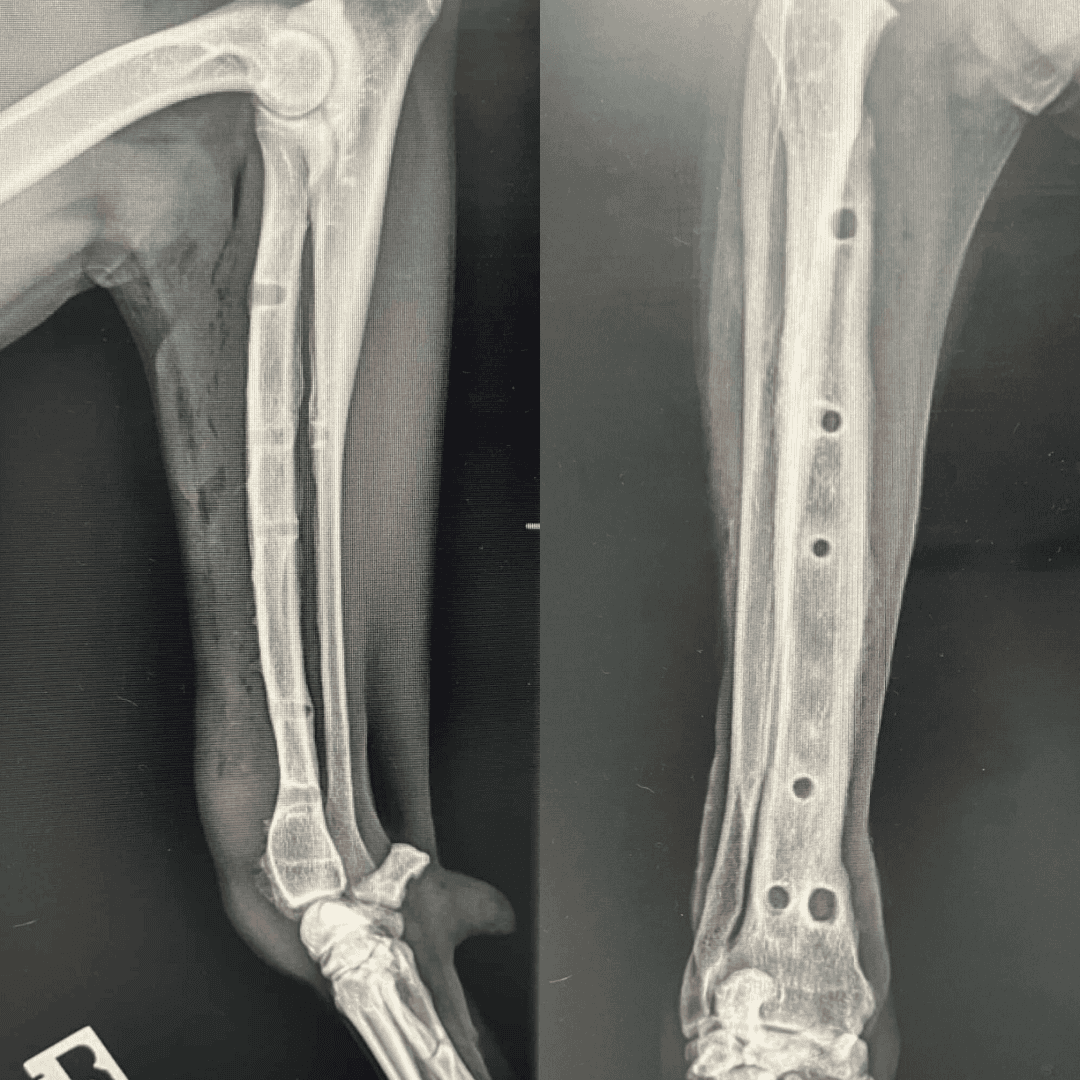
Non-union or malunion: Bones may fail to heal properly, resulting in non-union (where the bone ends do not grow together) or malunion (where they heal incorrectly).
Implant failure: Plates, screws, or other fixation devices can break or loosen, necessitating revision surgery.
Soft tissue damage: Surrounding muscles, tendons, and ligaments can be damaged during surgery, affecting recovery and function.
Nerve damage: Surgical procedures may inadvertently injure nearby nerves, leading to loss of sensation or motor function.
Joint stiffness or instability: After surgery, joints may become stiff or unstable, impacting mobility and requiring physical therapy or further intervention.
Hemorrhage: Excessive bleeding during or after surgery can lead to hematomas or other complications.
Anesthesia risks: Anesthetic complications can arise, particularly in older animals or those with pre-existing health conditions.
Pain management issues: Inadequate pain control can affect recovery and rehabilitation.
Thrombosis: Formation of blood clots can occur post-surgery, potentially leading to serious complications.
Delayed healing: Factors such as poor nutrition, obesity, or underlying health issues can delay recovery and healing times.
Psychological impact: Animals may experience stress or anxiety post-surgery, affecting their overall well-being and recovery.
Each case is unique, and thorough pre-surgical evaluations, careful surgical technique, and post-operative care can help minimize these risks. “Experience is king” highly experienced, expert surgeons have lower complication rates.
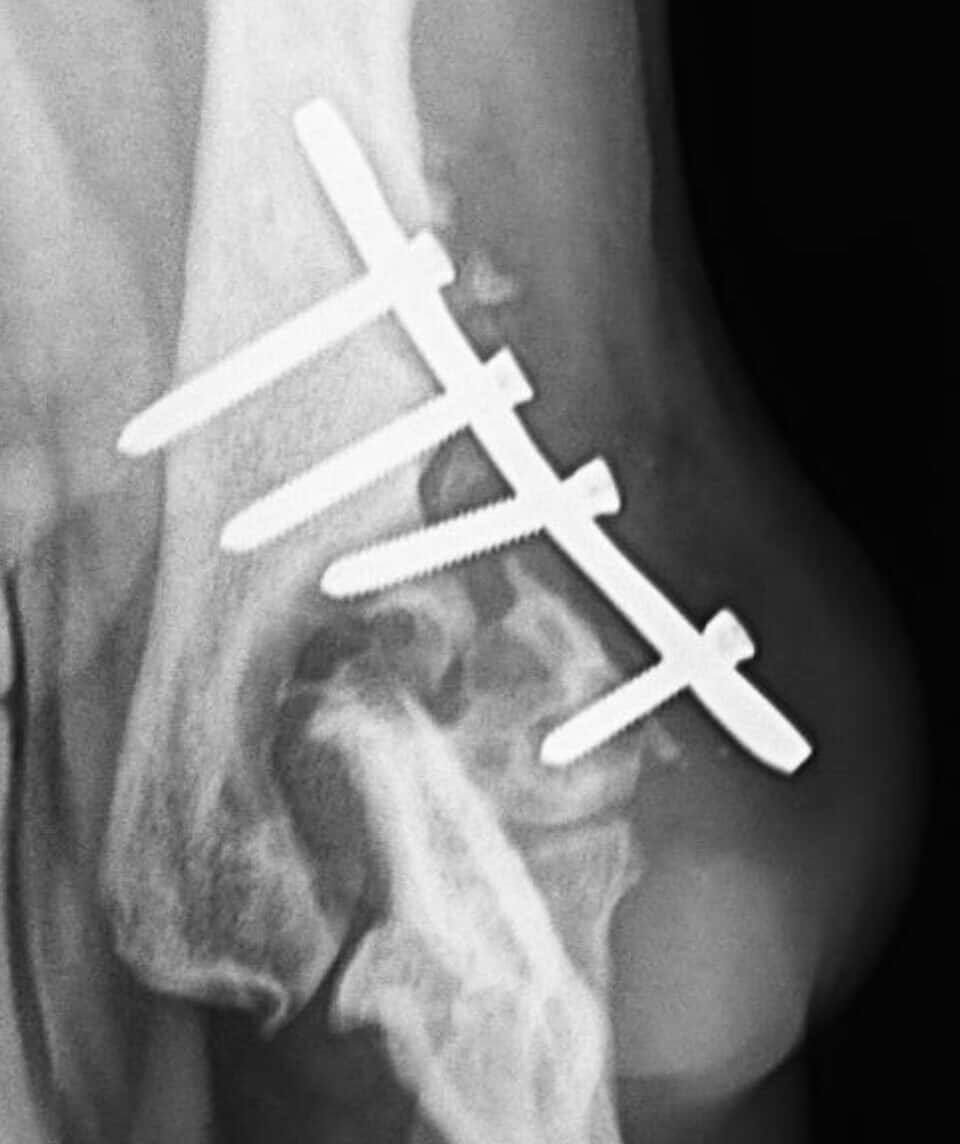
This repair was performed poorly leading to loosening of the reconstruction and failure of bone healing. It is important to preserve blood supply to bone segments during dissection.
Cost
Some complications are minor and resolve without treatment (eg. swelling, inflammation, pain) or require basic veterinary care in the form of medications such as antibiotics to treat infection or bandaging to protect open wounds. Other complications are more serious and may require revision surgery such as repeat suturing or even modifying the original internal surgery. This would be considered a major complication.
Owners of pet’s do have a role in the care of their pet after surgery and this includes appropriate exercise restriction, administration of medications and ensuring other postoperative care is provided. Owners are required to pay for ongoing veterinary treatment after surgery if complications arise. This comes at an additional cost and can vary tremendously. This can be stressful especially after spending a lot on the first operation.
MVO offers an in-house insurance policy where all postoperative complications are covered with no excess. Click here to find out more.
Prevention
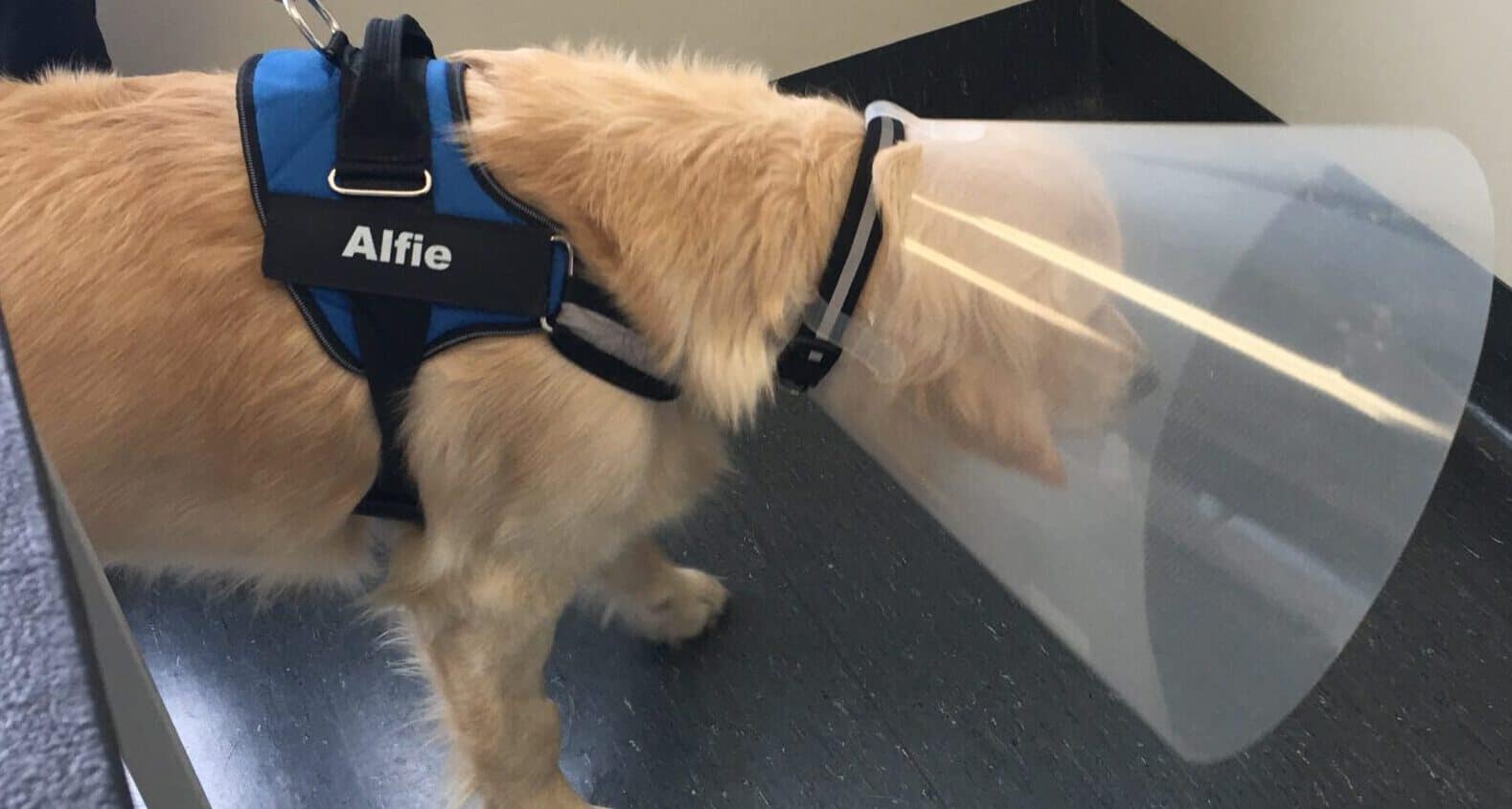
Many dogs and cats lick and chew at sutures after surgery. A plastic cone can be applied to prevent this. These Elizabethan head collars come in various lengths. They must be as long as your pets neck, head and tongue. Frequently owners remove or trim these E-collars and the pet is allowed to self-traumatise by licking. This increases the risk of infection significantly.
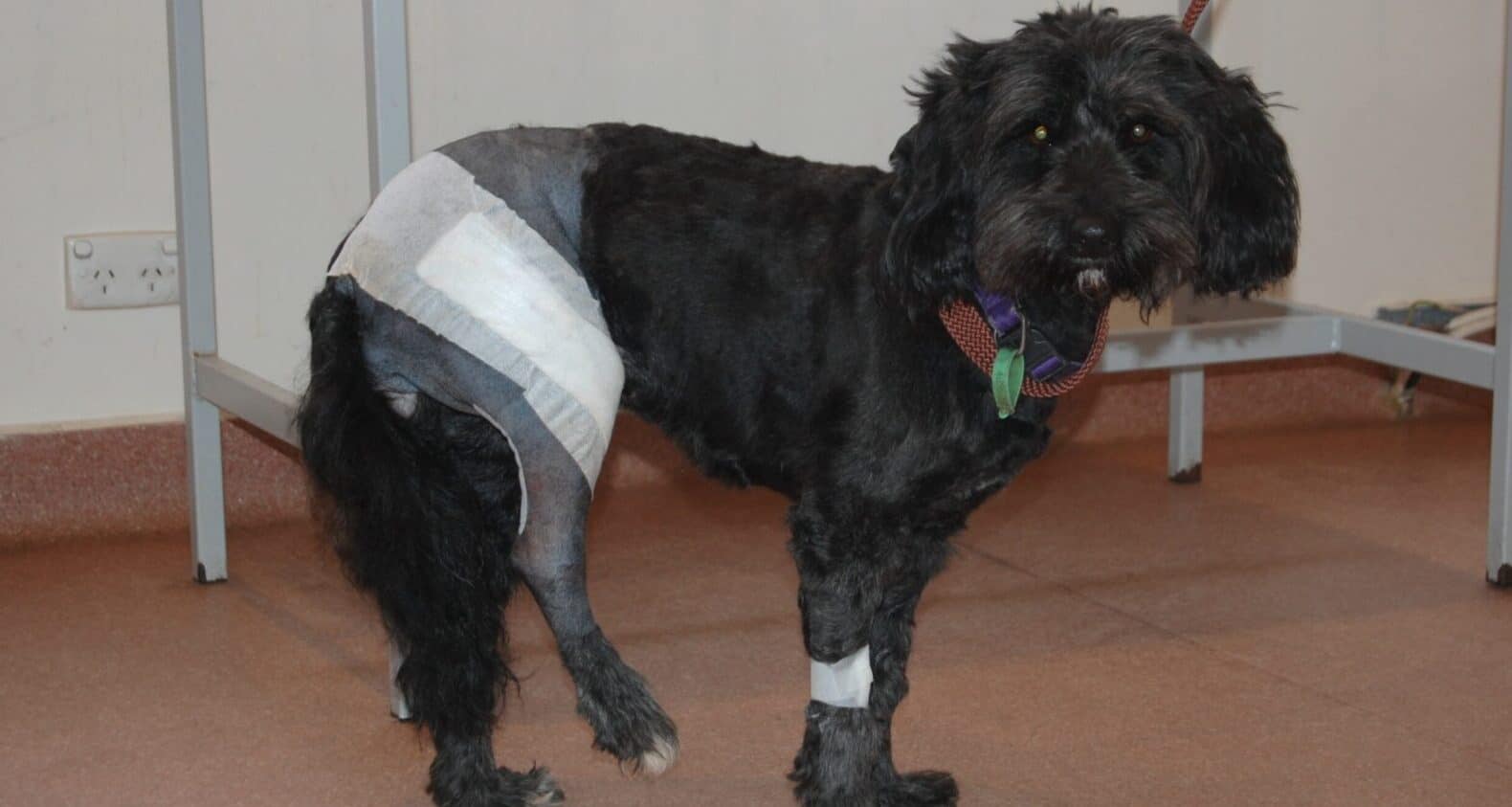
Adhesive wound dressings and bandages are frequently applied to the limb or body to cover wounds and prevent abrasive forces. As a general rule, covered wounds develop lower infection rates. However, bandages and splints must be regularly observed, checked and changed to prevent maceration. Yes, the bandage can actually cause a new problem if moisture is allowed to build up. Often male dogs urinate into hindlimb bandages and the chemical irritation of urine on the skin causes inflammation.
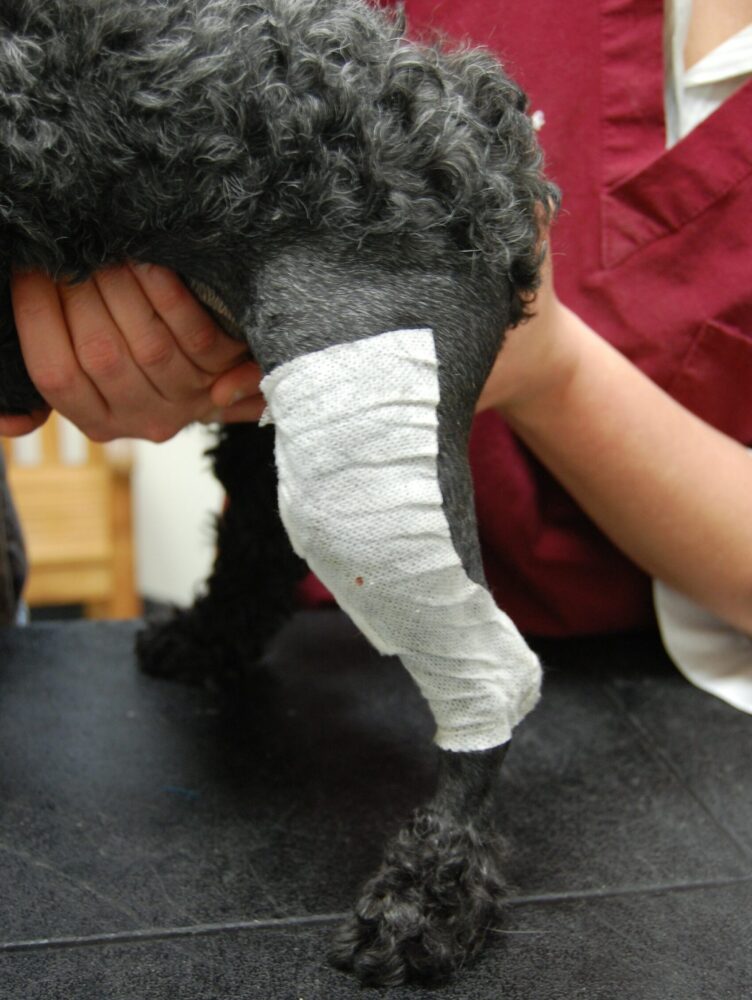
As a rule of thumb, if the wound dressing remains in place for over a week the infection rate is very low.
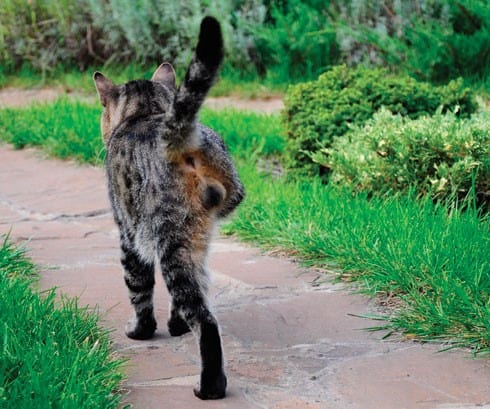
Complications and owner satisfaction associated with limb amputation in cats: 59 cases (2007–2017)
Background
Limb amputation may be recommended in domestic cats following a severe injury or disease. The purpose of the study was to report the signalment, the complications, recovery outcome, owner satisfaction and expectations of domestic cats following limb amputation.
Results
Medical records of 3 specialty hospitals were reviewed for cats that received a single limb amputation in a 10 year period (2007–2017). These cat owners were contacted, and 59 owners completed surveys, comprising the study population. The most common reasons for limb amputation were neoplasia (54.2%, 32/59), traumatic injury (40.7%, 24/59), bone or joint infection (3.4%, 2/59), and thromboembolism (1.7%, 1/59). Thirty-four cats (57.6%) had postoperative complications. Of the fifty-nine surveys, 52.5% reported minor complications and 5.1% reported major complications. There were no differences in postoperative complication rates for thoracic versus pelvic limb amputations. All owners reported either excellent (77.9%, 46/59), good (20.3% 12/59), or fair (1.7%, 1/59) satisfaction with the procedure. Based on their previous experiences, 84.7% (50/59) of owners would elect limb amputation if medically warranted for another pet. The remaining 15.3% of owners who would not elect limb amputation again had experienced death of their pet with a median survival time of 183 days.
Conclusion
Owners reported a positive satisfaction when considering complications, recovery outcome, and expectations. This study can be used by veterinarians to guide cat owners in the decision making process of limb amputation.
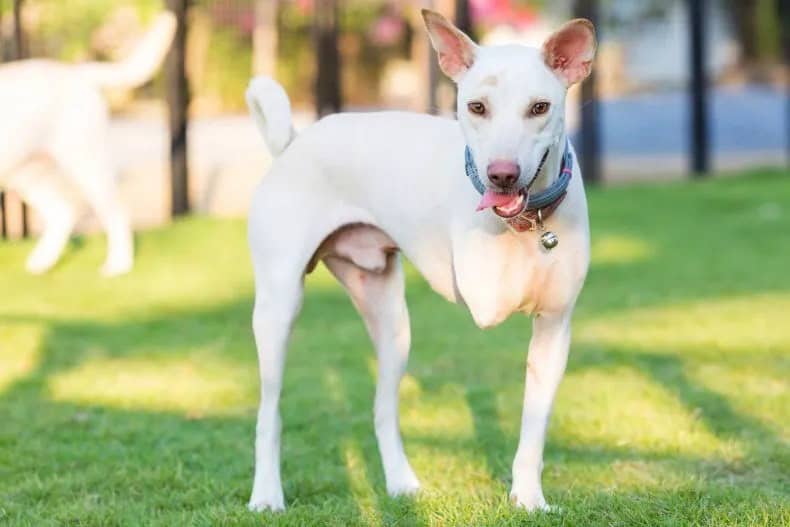
Outcomes of dogs undergoing limb amputation, owner satisfaction with limb amputation procedures, and owner perceptions regarding postsurgical adaptation: 64 cases (2005-2012)
Objective: To evaluate outcomes of dogs and owner satisfaction and perception of their dogs' adaptation following amputation of a thoracic or pelvic limb.
Design: Retrospective case series.
Animals: 64 client-owned dogs. Procedures-Medical records of dogs that underwent limb amputation at a veterinary teaching hospital between 2005 and 2012 were reviewed. Signalment, body weight, and body condition scores at the time of amputation, dates of amputation and discharge from the hospital, whether a thoracic or pelvic limb was amputated, and reason for amputation were recorded. Histologic diagnosis and date of death were recorded if applicable. Owners were interviewed by telephone about their experience and interpretation of the dog's adaptation after surgery. Associations between perioperative variables and postoperative quality of life scores were investigated.
Results: 58 of 64 (91%) owners perceived no change in their dog's attitude after amputation; 56 (88%) reported complete or nearly complete return to preamputation quality of life, 50 (78%) indicated the dog's recovery and adaptation were better than expected, and 47 (73%) reported no change in the dog's recreational activities. Body condition scores and body weight at the time of amputation were negatively correlated with quality of life scores after surgery. Taking all factors into account, most (55/64 [86%]) respondents reported they would make the same decision regarding amputation again, and 4 (6%) indicated they would not; 5 (8%) were unsure.
Conclusions and clinical relevance: This information may aid veterinarians in educating clients about adaptation potential of dogs following limb amputation and the need for postoperative weight control in such patients.
